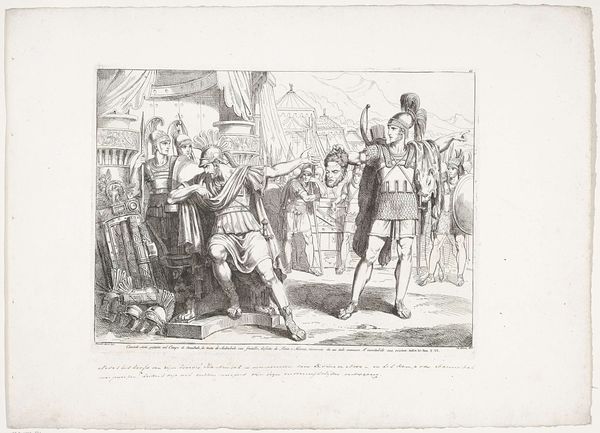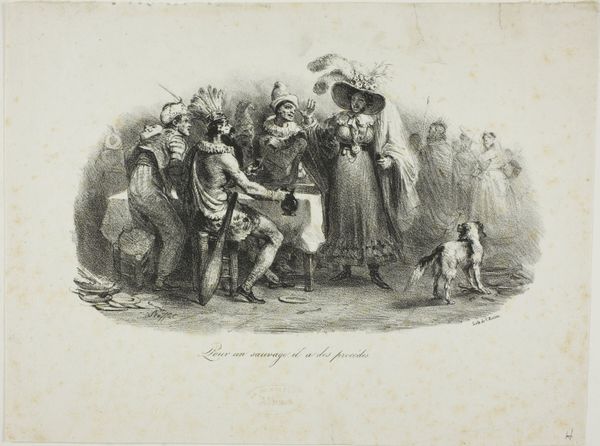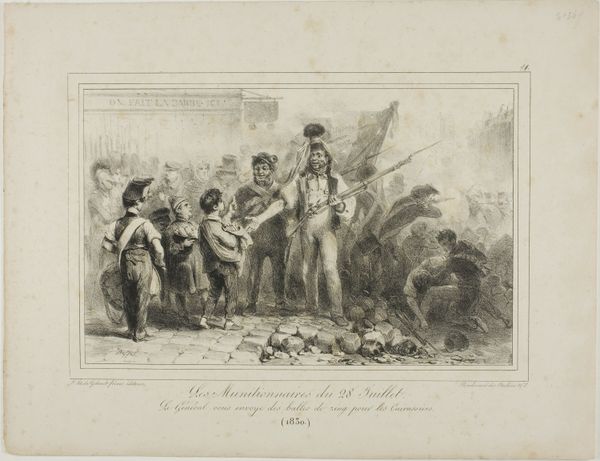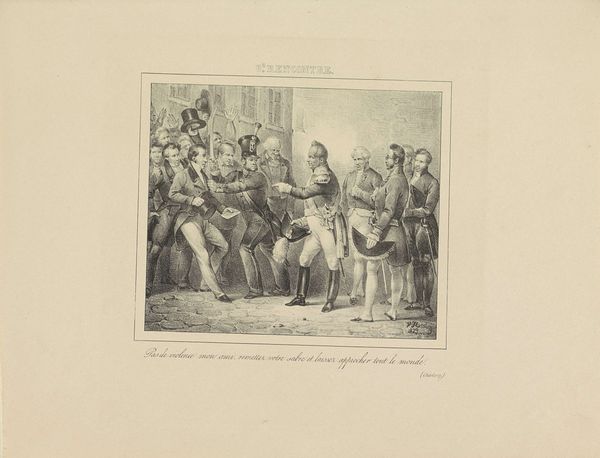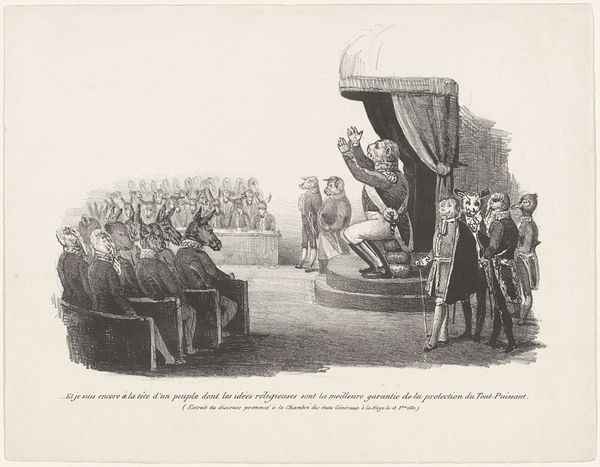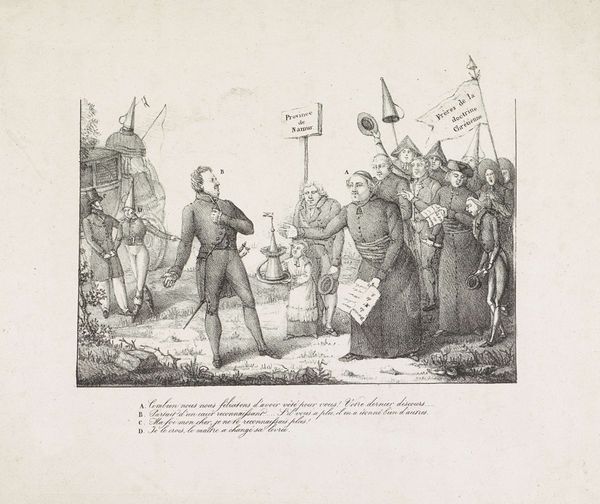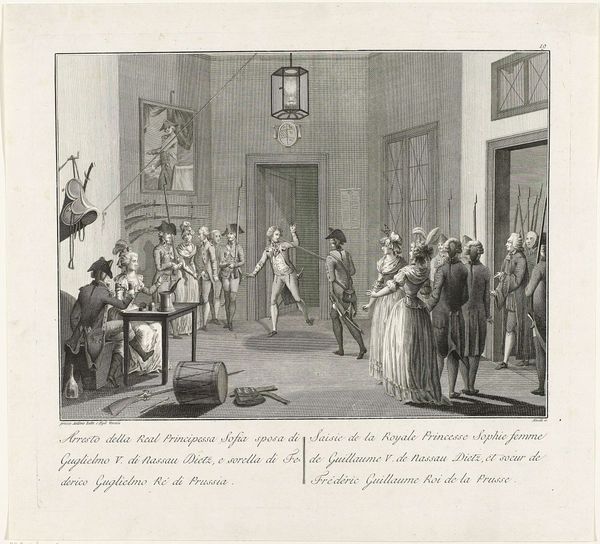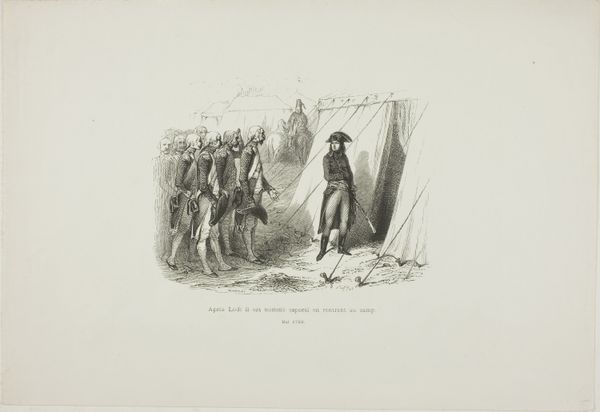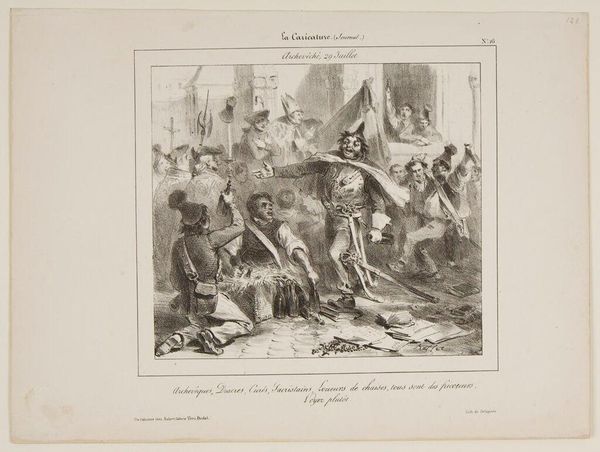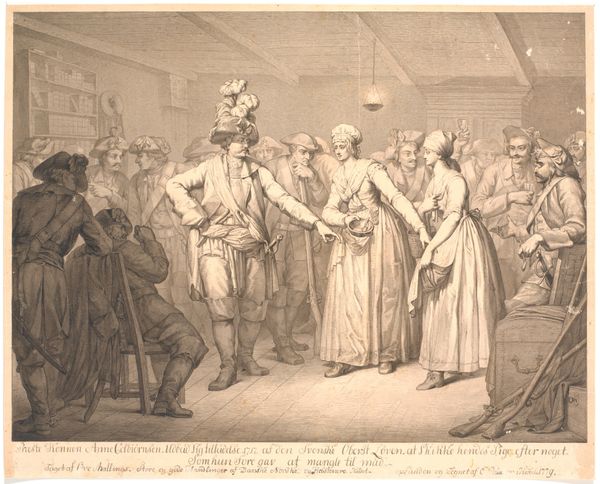
print, engraving
#
allegory
# print
#
caricature
#
old engraving style
#
figuration
#
history-painting
#
engraving
Dimensions: height 226 mm, width 302 mm
Copyright: Rijks Museum: Open Domain
Editor: This is a print from 1831 called "Spotprent op het regentschap van Surlet de Chokier," by an anonymous artist. The medium is engraving. I'm struck by the use of animals to depict these figures and wonder, what’s the message being conveyed through this unusual composition? Art Historian: That’s a great starting point. This is indeed a potent piece of political commentary, typical of the era. What you’re seeing is a caricature critiquing the regency of Surlet de Chokier during a pivotal moment in Belgian history following the revolution. Consider how animal representations tap into established power structures and stereotypes prevalent at the time. For instance, why a donkey and what might it symbolize? Editor: I guess a donkey usually symbolizes stubbornness, but I hadn’t really thought about the individual animals beyond just noticing them. So the animals are stand-ins for particular political figures or groups? Art Historian: Exactly. Caricatures often use animalistic features to highlight perceived flaws or undermine the authority of individuals or regimes. The clothing and objects are important semiotic clues, revealing each animal-person's social standing or ideology within this specific socio-political milieu. Do you recognize the King standing on the plinth? Editor: Not specifically, but based on your analysis, I assume even his presentation, and those surrounding him, reflect something about contemporary political sentiments... The figures are dressed so formally and portrayed like humans even with their animal heads...It feels almost…satirical, is that correct? Art Historian: Precisely. Satire becomes a tool for social commentary, questioning legitimacy through humor and irony. The artist likely intended to provoke thought and possibly incite opposition. Considering how such images might circulate among different social classes back then deepens our understanding too. In the case of "Spotprent op het regentschap van Surlet de Chokier," what layers of social commentary might an anonymous print, quickly disseminated, have created? Editor: That definitely puts it into a new context for me! It's one thing to look at a piece, but thinking about its function as propaganda, how it was received, and what conversations it sparked makes it far more dynamic and significant. I’ll remember to delve into the social contexts surrounding art much more closely in the future. Art Historian: Absolutely. Connecting the artwork to its historical and societal moment unveils a new, relevant understanding that reflects issues and sentiments alive across time.
Comments
No comments
Be the first to comment and join the conversation on the ultimate creative platform.
